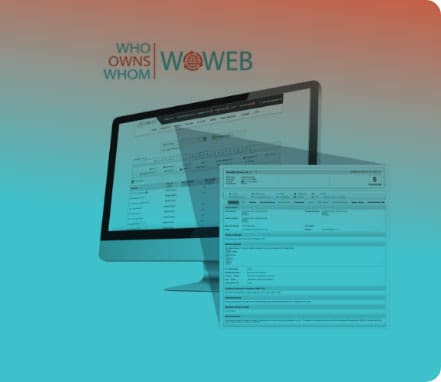Report Coverage
This report focuses on Nigerian mobile and fixed telephony, internet and broadband, and the infrastructure that supports them. It includes information on the state and size of the sector, trends, regulations and government initiatives and developments. There are profiles of 23 companies including the major players, MTN, Globacom, Airtel and 9mobile and other notable players such as 21st Century, IHS Towers, Inq.Digital, ipNX and MainOne Cable Company.
Introduction
• The telecommunications sector in Nigeria has the capacity to drive the transformation agenda of the Nigerian government towards a digital economy by 2025.
• Nigeria had a population of over 200 million people and had over 195 million subscribers in 2021.
• The telecoms sector is growing due to a rising urban population and the increasing adoption of smartphones, services and apps.
• Four big mobile operators, MTN, Airtel, Globacom (GLO) and 9mobile, dominate the sector and continue to post revenue growth, while local internet service providers haven’t recovered from the pandemic.
• High energy costs, rising inflation, local currency depreciation and scarcity of foreign currency remain a challenge for operators.
Strengths
• Competitive frequency spectrum auctioning.
• Excess available bandwidth.
• Improved international connectivity due to increased submarine cable capacity.
• Introduction of key reforms and regulations by government and Nigerian Communications Commission to facilitate the rollout and sharing of infrastructure, and improved access to credit to start a business.
• Large population particularly in cities such as Lagos and others with over 10 million people.
Weaknesses
• Access to electricity by rural population remains a challenge.
• High costs of energy particularly diesel.
• Lack of internet literacy and low awareness of the benefits of telecoms services.
• Lack of masterplans for infrastructure like road networks, water, oil and gas pipelines, affecting deployment of telecom infrastructure.
• Long delays in processing infrastructure permits as multiple government agencies are involved in the process.
• Market dominated by few players is squeezing out others.
• Multiple tax regimes at federal, state and local government adding to operational costs.
• Operators are hesitant to make capex investment in sparsely-populated rural areas citing less economic returns.
• Right of way charges affecting deployment of infrastructure.
• Rising exchange rates affecting prices of imported equipment and devices.
• Scarcity of foreign currency.
Opportunities
• Expansion of 4G and rollout of 5G will drive high demand for mobile base stations and cell towers.
• General increase in demand for data and internet across all segments of the telecoms sector.
• Government targeting high penetration rates in internet and broadband present opportunities for companies to enter the market.
• Granting of extra licences to increase broadband penetration, especially in rural areas.
• Growth of e-services and cloud computing fuelling increased demand for data services.
• Huge telecoms infrastructure gap that has the potential to attract more investments in infrastructural development.
• Increase in demand for mobile phones.
• Increase in mobile financial services usage will drive demand for smartphones, data and increase in mobile money transactions and subscribers.
• Increased interest in fibre to business and fibre to home to result in increased bandwidth capacity.
• Infrastructure sharing and leasing could drive down operational costs.
• Large growing young population that has the potential for being first time mobile subscribers.
Threats
• Corruption and fraud threaten economic stability.
• High inflation rates, driving down consumer spending and threating investor confidence.
• Prevalence of cybercrime adding to costs as operators have to install systems to reduce incidents of cybercrime.
• Vandalism of infrastructure increasing costs to operators.
Outlook
• The IMF forecast that the Nigerian economy will grow by 3.2% in 2023.
• Industry analysts note that the government has made progress on removing barriers faced by telecoms operators and created opportunities for the private sector as it implements measures to boost broadband penetration.
• Sustained demand for data services and increased rural connectivity will be key growth drivers.
• Activities in the data centre segment are expected to remain buoyant due to data localisation policy.
• Improving the ecosystem for entrepreneurs, telecom infrastructure development, monetisation of 4G, the rollout of 5G and e-services will further drive growth in the medium to long term.
• Industry sources say increasing regulatory involvement determined by political opportunism rather than market or consumer needs is likely to hamper investment.
Full Report
R 1 900.00(ZAR) estimated $113.97 (USD)*
Industry Landscape
R 1 330.00(ZAR) estimated $ 79.78 (USD)*
Historical Reports
Telecommunications in Nigeria 2016-12-28
R 1 900.00(ZAR) estimated $113.97 (USD)*
View Report Add to CartTelecommunications in Nigeria 2014-07-31
R 1 900.00(ZAR) estimated $113.97 (USD)*
View Report Add to CartTable of Contents
[ Close ]| PAGE | ||
|---|---|---|
| 1. | INTRODUCTION | 1 |
| 2. | COUNTRY INFORMATION | 1 |
| 3. | DESCRIPTION OF THE INDUSTRY | 4 |
| 3.1. | Industry Value Chain | 5 |
| 3.2. | Geographic Position | 8 |
| 3.3. | Size of the Industry | 9 |
| 3.4. | Key Success Factors and Pain Points | 14 |
| 4. | LOCAL | 15 |
| 4.1. | State of the Industry | 15 |
| 4.2. | Key Trends | 22 |
| 4.3. | Notable Players | 23 |
| 4.4. | Trade | 24 |
| 4.5. | Corporate Actions and Developments | 24 |
| 4.6. | Regulations | 26 |
| 4.7. | Enterprise Development and Social Economic Development | 28 |
| 5. | AFRICA | 30 |
| 6. | INTERNATIONAL | 35 |
| 7. | INFLUENCING FACTORS | 38 |
| 7.1. | COVID-19 | 38 |
| 7.2. | Vandalism | 38 |
| 7.3. | Multiple Taxation | 38 |
| 7.4. | Cybercrime and IT Security | 39 |
| 7.5. | Corruption | 40 |
| 7.6. | Economic Environment | 40 |
| 7.7. | Labour | 41 |
| 7.8. | Environmental Issues | 42 |
| 7.9. | Technology, Research and Development (R&D) and Innovation | 43 |
| 7.10. | Government Support | 44 |
| 7.11. | Input Costs | 45 |
| 8. | COMPETITIVE ENVIRONMENT | 46 |
| 8.1. | Competition | 46 |
| 8.2. | Barriers to Entry | 46 |
| 9. | SWOT ANALYSIS | 47 |
| 10. | OUTLOOK | 49 |
| 11. | INDUSTRY ASSOCIATIONS | 49 |
| 12. | REFERENCES | 50 |
| 12.1. | Publications | 50 |
| 12.2. | Websites | 50 |
| APPENDIX 1 | 52 | |
| Summary of Notable Indigenous and Foreign Players | 52 | |
| COMPANY PROFILES | 55 | |
| 21st Century Technologies Ltd | 55 | |
| 3CHUB Brand Management Ltd | 57 | |
| Airtel Networks Ltd | 58 | |
| Big Picture Nigeria Ltd | 60 | |
| Emerging Markets Telecommunications Services Ltd | 61 | |
| Globacom Ltd | 63 | |
| Hotspot Network Ltd | 65 | |
| IHS Towers NG Ltd | 67 | |
| Inq.Digital Nigeria Ltd | 68 | |
| Internet Solutions Nigeria Ltd | 70 | |
| ipNX Nigeria Ltd | 72 | |
| MAFAB Communications Ltd | 74 | |
| MainOne Cable Company Nigeria Ltd | 75 | |
| MTN Nigeria Communications PLC | 77 | |
| NatCom Development & Investment Ltd | 81 | |
| Phase 3 Telecoms Ltd | 83 | |
| Smile Communications Nigeria Ltd | 85 | |
| Spectranet Ltd | 86 | |
| Spectrum Phones Ltd | 88 | |
| Swift Networks Ltd | 89 | |
| Tingo Mobile PLC | 91 | |
| Tizeti Network Ltd | 93 | |
| Zinox Technologies Ltd | 94 |



